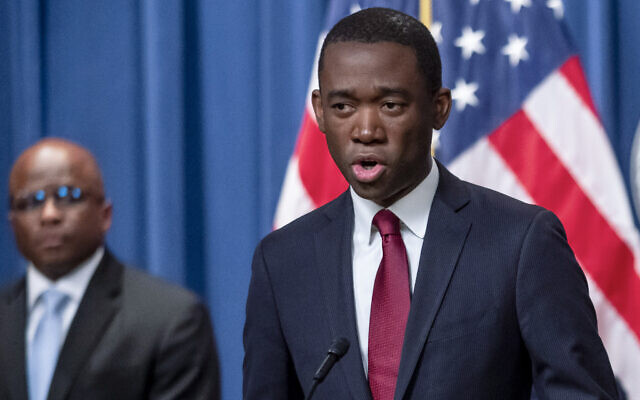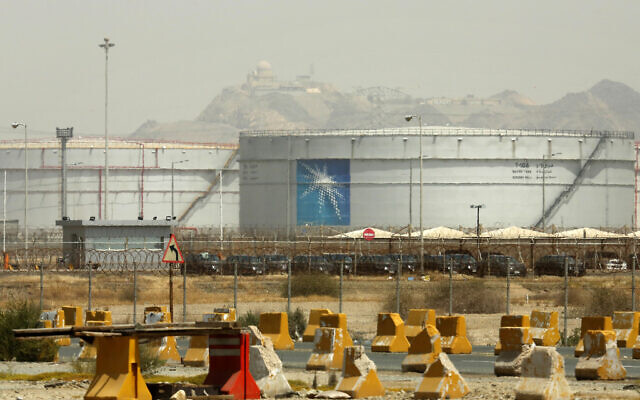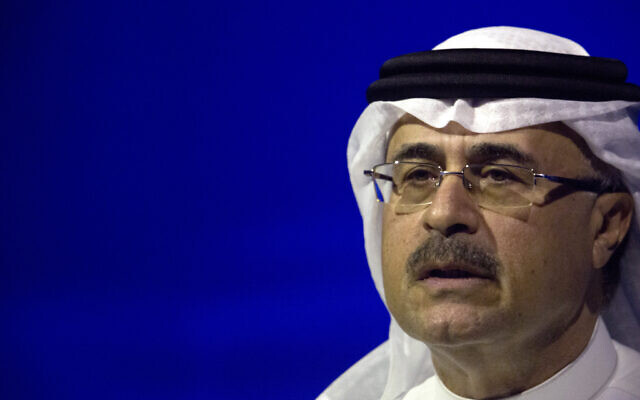Iran said on Sunday its oil exports have risen over the past year, reaching their highest level since the US imposed new sanctions in 2018, according to Iran’s semi-official Tasnim news agency.
Oil Minister Jawad Ouji said 83 million barrels more oil Iranians were sold since the beginning of the year on March 21, 2022, compared to the same period in 2021-2022. This was 190 million barrels higher than in each of the two years, he added.
Gas exports were also increased by 15 percent in 2022-2023 compared to the previous Iranian year.
The US imposed tough sanctions on Iran after pulling out of the so-called Joint Comprehensive Plan of Action signed between Iran and world powers. The JCPOA granted sanctions relief in exchange for curbs on Iran’s nuclear program aimed at preventing Iran from obtaining nuclear weapons. The sanctions focus on Iran’s oil exports, and few countries buy its crude, with the exception of China. In response, Iran abandoned many of its commitments to the accord, ramped up its nuclear program, and enriched uranium to a level of purity far exceeding the terms of the nuclear deal. Iran recently admitted to enriching uranium to 84%, a small technological stop from weapons-grade material.
On Thursday, the US announced more sanctions against people and firms linked to Iran and said an illegal banking network was used to hide the transactions.
The US said it has fined 39 firms linked to a shadow banking system that helped obscure financial activities between banned Iranian firms and their overseas buyers for petrochemicals produced in Iran.
The Treasury Department said the companies – from Hong Kong to the United Arab Emirates – created a “significant ‘shadow banking’ network” that covered banned Iranian entities to hide petrochemical sales with foreign customers.
Deputy Secretary of the Treasury Wally Adeyemo said, “Today’s action demonstrates the United States’ commitment to enforcing our sanctions and our ability to disrupt Iran’s overseas financial networks, which it uses to launder money.” does for.”

US Deputy Treasury Secretary Wally Adeyemo speaks at the Justice Department in Washington on January 18, 2023. (Nathan Howard / AP)
US Secretary of State Antony Blinken said in a written statement that the US “will continue to disrupt efforts to evade US sanctions.”
Thursday’s announcement follows a set of financial penalties on a China-based network of firms involved and one individual accused of being responsible for the sale and shipment of thousands of drone components to Iran. Iran is accused of supplying drones to Russia that are used to bomb Ukrainian civilians as the Kremlin continues its invasion of Ukraine.
Among other things, the sanctions deny individuals and firms access to any assets or financial assets held in the US and prevent US companies and citizens from doing business with them.
The sanctions come a day after sanctions were imposed on Iranian prison officials and others over the treatment of young women and girls.
Tensions between the US and Iran come amid months of anti-government protests in Iran and Western anger over Iran’s export of attack drones to Russian forces fighting in Ukraine.
Bumper profit for Saudi Aramco
Also on Sunday, Saudi Aramco said it achieved a “record” profit of $161.1 billion last year, highlighting how a surge in oil prices after Russia invaded Ukraine has hit the world’s biggest crude oil producer. Promoted growth in exports.
The mostly state-owned energy giant, the world’s second most valuable company after Apple, said in a filing to the Saudi stock market that net income for 2022 was up 46 percent from 2021 at $110 billion.
The results – the strongest since Aramco became a listed company in 2019 – were “mainly due to the impact of higher crude oil prices and volumes sold, and stronger refining margins,” it said.

Storage tanks are seen at the North Jiddah Bulk Plant, an Aramco oil facility in Jiddah, Saudi Arabia, on March 21, 2021. (Amar Nabil/AP)
Aramco’s profit is in line with record profits for 2022 reported by the five oil majors — Shell, Chevron, ExxonMobil, BP and Total Energy — of more than $150 billion and $200 billion without costly withdrawals from Russia. Close to a billion dollars.
He also boosted Saudi Arabia’s overall economic growth, which officials peg at 8.7 percent in 2022, the highest rate in the G20.
The net income figure is nearly double the $88.2 billion the firm pulled in in 2019 before the coronavirus pandemic.
“Aramco rides the wave of higher energy prices in 2022. That’s what the company looks set to do,” said Robert Mogielnicki of the Arab Gulf States Institute in Washington. It would have been difficult for Aramco not to put up a strong performance in 2022.
Energy prices are expected to remain on the rise in 2023, partly because of production cuts approved last October by the OPEC+ cartel that Riyadh co-leads with Moscow – a move strongly criticized by Washington.
Aramco’s facilities have suffered drone and missile attacks in the past, claimed by Yemen’s Iran-backed Houthi rebels, most recently about a year ago, but a amazing deal announced On Friday there was a risk looming large in the coming months between Riyadh and Tehran to restore diplomatic ties severed in 2016.
“I don’t envision another record year for Aramco in 2023, but it could still be a solid performance,” Mogielnicki said.
Saudi Arabia has pledged to achieve net zero carbon emissions by 2060, drawing skepticism from environmental campaigners.
Authorities are simultaneously investing more in fossil fuels to ensure energy security and address inflation and other economic woes.
“Given that we expect oil and gas to remain essential for the foreseeable future, the risks of under-investment in our industry are real – including contributing to higher energy prices,” Aramco CEO Amin Nasser said on Sunday.

Amin Nasser, chairman and chief executive officer of state oil company Saudi Aramco, speaks at the World Energy Congress in Abu Dhabi, United Arab Emirates September 10, 2019. (John Gambrel/AP)
Aramco has pledged to achieve “operational net-zero” carbon emissions by 2050.
This applies to emissions that are produced directly by Aramco’s industrial sites, but not CO2 produced when customers burn Saudi oil in their cars, power plants and furnaces.
Aramco floated 1.7 percent of its shares on the Saudi exchange in December 2019, generating $29.4 billion in the world’s largest initial public offering.
